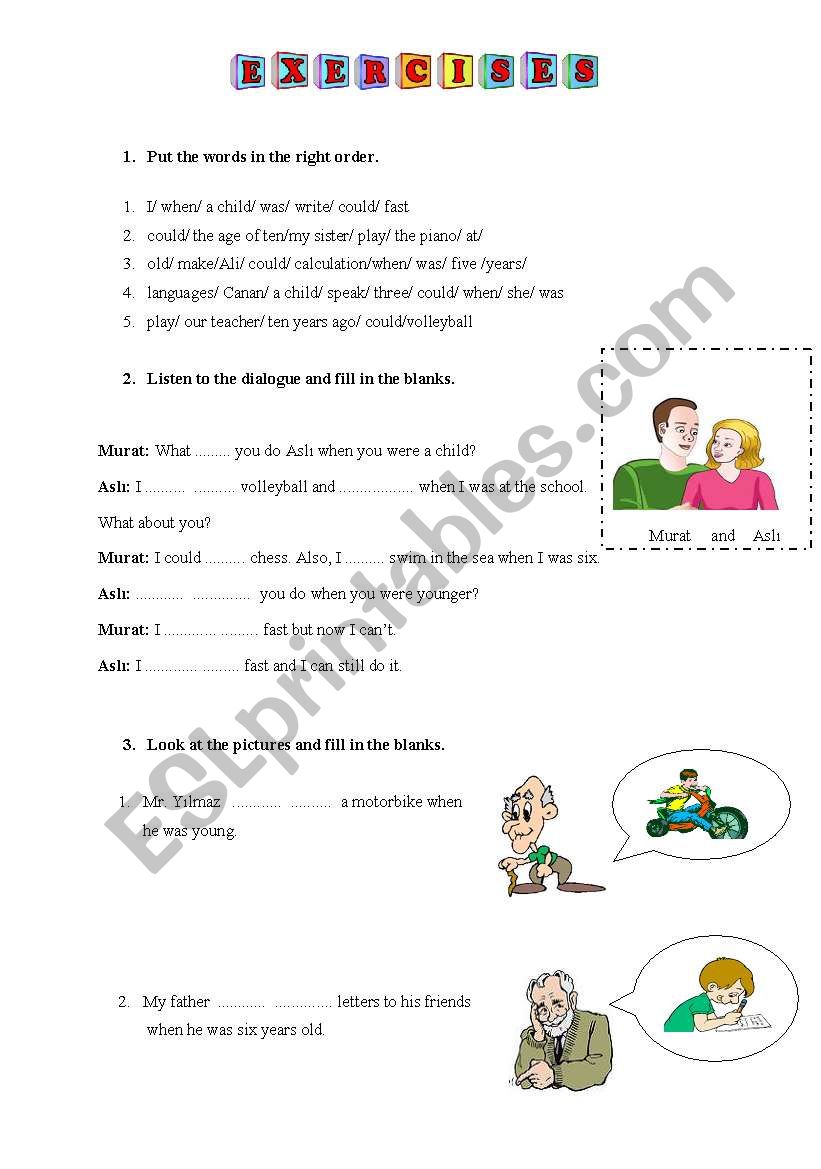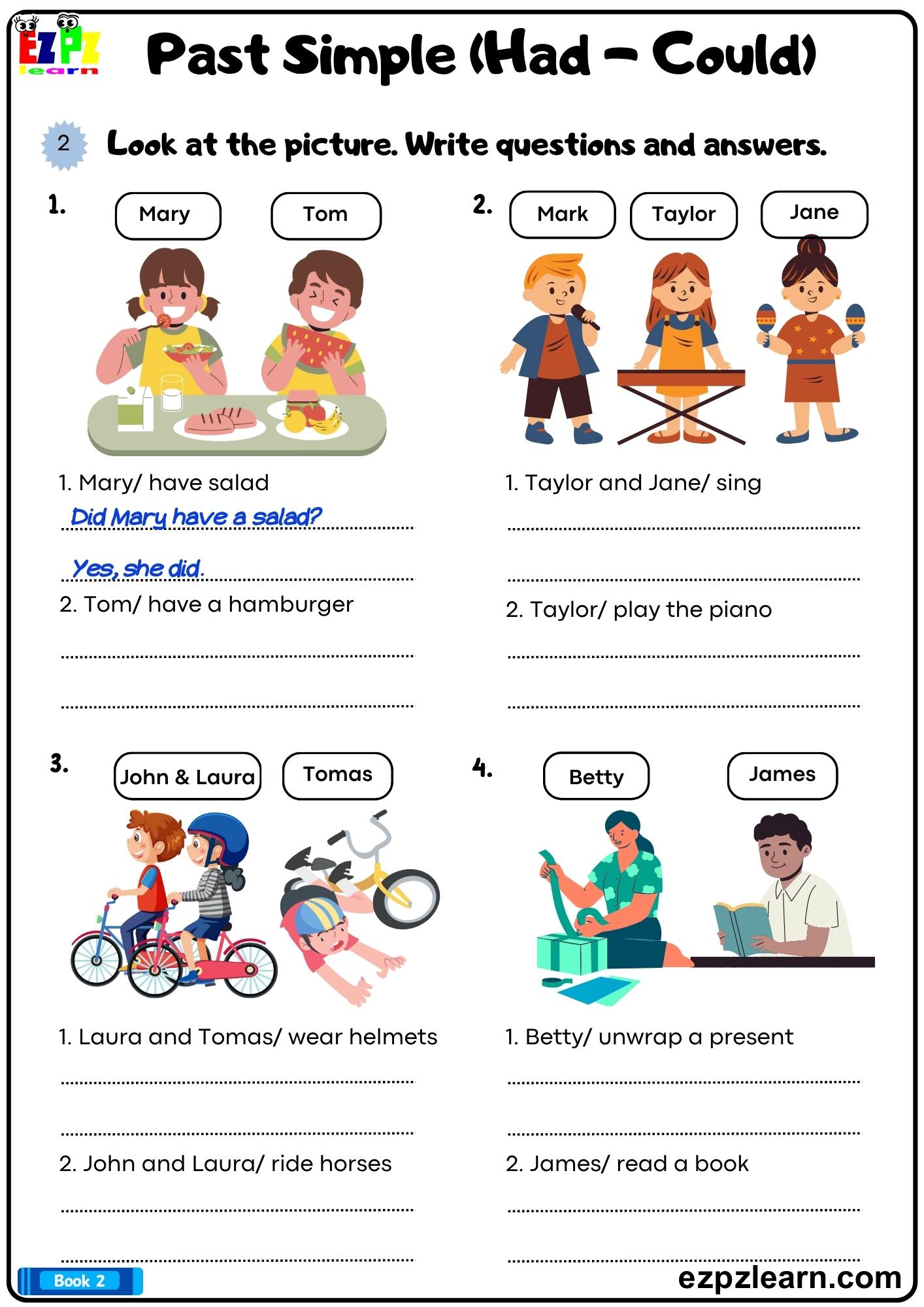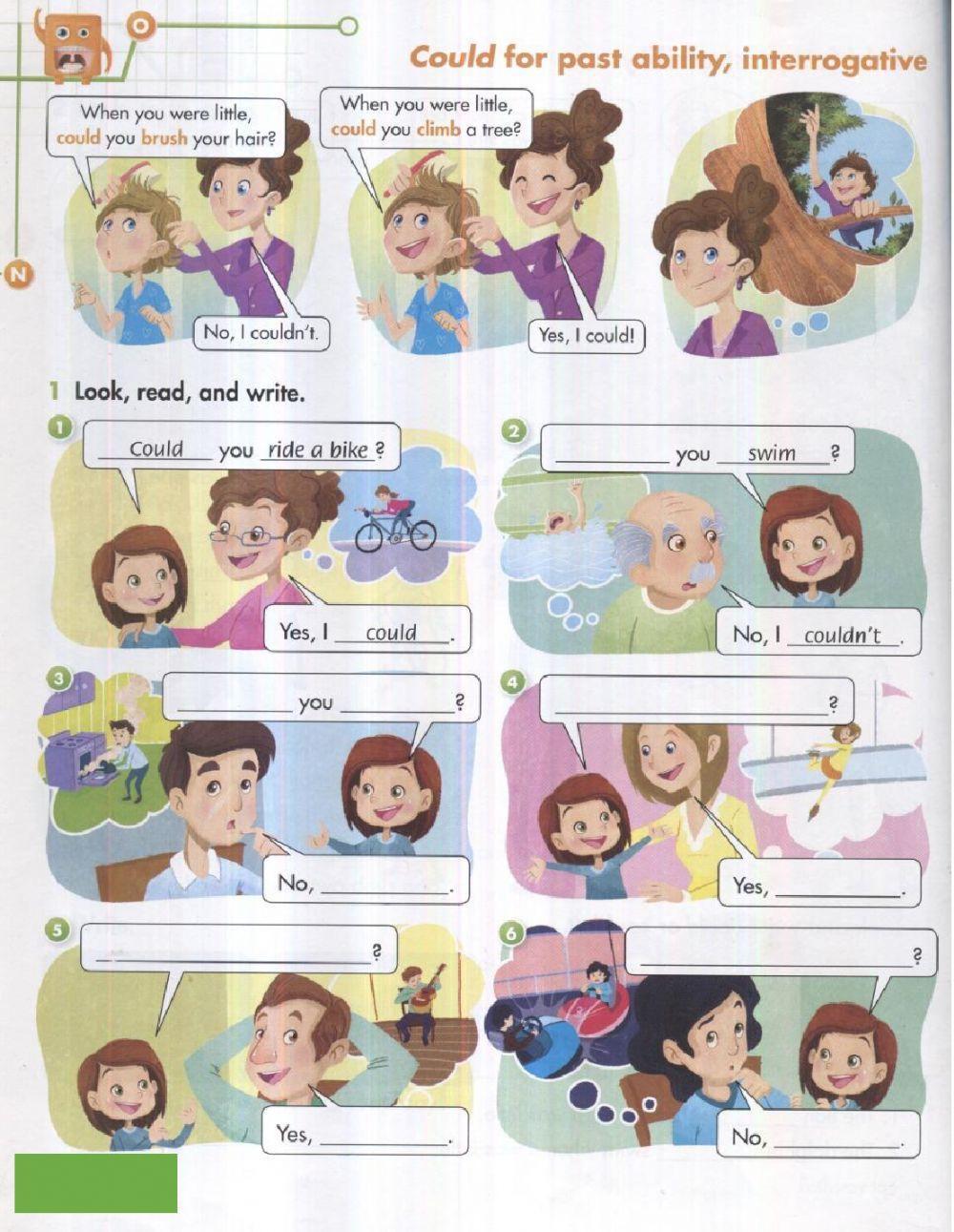
Mastering the Past: The Indispensable Role of Past Ability Worksheets
Learning a new language is a journey filled with fascinating grammatical landscapes, and one of the most crucial terrains to navigate is expressing past abilities. Whether recounting childhood feats, historical achievements, or simply what one could or couldn’t do yesterday, the ability to articulate past skills and capabilities is fundamental for effective communication. For English language learners, this often presents a nuanced challenge, as different shades of past ability require distinct grammatical structures. This is precisely where past ability worksheets emerge as an invaluable resource, providing structured practice, reinforcing understanding, and paving the way for fluency.
The Nuances of Past Ability: A Grammatical Overview
Before delving into the utility of worksheets, it’s essential to understand the core grammatical structures used to express past ability in English. These are not interchangeable and each carries its own specific connotation:

-

"Could": This is the most common and versatile modal verb for general past ability. It signifies that someone had the general capacity to do something in the past.

- Examples: "When I was younger, I could run for miles." (General ability) "He could play the piano beautifully when he was a teenager." (General skill)
- Negation: "Couldn’t" (or "could not"). "I couldn’t swim until I was ten."
- Limitation: "Could" is generally not used for a single, specific achievement in the past. For instance, you wouldn’t say "I could finish the marathon yesterday."

-
"Was/Were Able To": This phrase is used to express a specific achievement or ability on a particular occasion in the past. It emphasizes that someone succeeded in doing something in a specific situation.

- Examples: "Despite the heavy traffic, we were able to arrive on time." (Specific achievement) "After hours of trying, she was able to solve the complex puzzle." (Specific success)
- Negation: "Was/Were not able to." "He wasn’t able to attend the meeting due to illness."
- Versatility: Unlike "could," "was/were able to" can be used for both general past ability (less common) and specific past achievement.


-
"Managed To": Similar to "was/were able to," "managed to" also denotes a specific achievement, but it often carries the additional implication of difficulty or effort involved in accomplishing the task.
- Examples: "The team managed to win the game despite being down by two goals." (Implies overcoming a challenge) "After several attempts, I managed to open the stubborn jar." (Implies effort)
-
"Used To Be Able To": This structure is used to talk about a past ability that is no longer true. It highlights a change in capability over time.
- Examples: "I used to be able to stay up all night, but not anymore." "He used to be able to speak French fluently, but he’s forgotten most of it."


Grasping these distinctions is paramount for accurate and natural-sounding English. However, theoretical understanding alone is rarely sufficient. Consistent, varied, and contextualized practice is key, and this is precisely where past ability worksheets prove their mettle.
Why Past Ability Worksheets Are Indispensable Learning Tools
Worksheets, often seen as traditional educational tools, remain incredibly effective for language acquisition due to several compelling reasons:
-
Structured Practice: Worksheets break down complex grammar points into manageable exercises. They guide learners through different applications of "could," "was/were able to," "managed to," and "used to be able to" in a systematic manner, preventing overwhelm.
-
Reinforcement and Repetition: Language learning thrives on repetition. Worksheets provide ample opportunities to encounter and utilize the target structures multiple times in various contexts, embedding them more deeply into the learner’s linguistic memory.
-
Identification of Common Errors: Well-designed worksheets often include exercises that specifically target common mistakes, such as confusing "could" with "was able to" for specific achievements, or misusing "used to." By identifying and correcting these errors early, learners build a more solid foundation.
-
Varied Exercise Types: From simple fill-in-the-blanks to more complex sentence transformations, error correction, and short answer questions, worksheets offer a diverse range of exercise types that cater to different learning styles and keep the practice engaging.
-
Self-Paced Learning and Assessment: Learners can complete worksheets at their own pace, allowing them to focus on areas where they struggle. They also serve as an excellent self-assessment tool, enabling learners to gauge their understanding and track their progress.
-
Scaffolding for Higher-Level Skills: Mastery of grammatical structures through worksheets provides the necessary scaffolding for more complex language tasks. Once learners are confident in forming sentences about past ability, they can more easily integrate these structures into speaking, writing, and listening comprehension activities.
Types of Past Ability Worksheets: A Comprehensive Toolkit
The best past ability worksheets are not monotonous; they offer a dynamic range of exercises designed to challenge learners in different ways. Here are some common and effective types:
-
Fill-in-the-Blanks: The most straightforward type. Learners choose the correct past ability expression ("could," "was able to," "managed to," etc.) to complete sentences based on context.
- Example: "When I was five, I __ touch my toes." (could/was able to)
-
Sentence Transformation: Learners rewrite sentences, changing the structure while maintaining the original meaning. This helps them understand the nuances between different expressions.
- Example: "He succeeded in climbing the mountain." (Rewrite using "managed to") -> "He managed to climb the mountain."
-
Error Correction: Learners identify and correct grammatical errors in sentences that misuse past ability structures. This sharpens their analytical skills.
- Example: "Yesterday, I could finish all my homework." (Correct: "Yesterday, I was able to finish all my homework.")
-
Matching Exercises: Learners match sentence halves, or match situations with the most appropriate past ability expression.
- Example: Match: "Despite the bad weather" with "they were able to complete the outdoor event."
-
Contextualized Gap-Fill: Longer passages or short stories with blanks that require learners to infer the correct past ability expression based on the narrative. This encourages reading comprehension alongside grammar practice.
-
Question and Answer Prompts: Learners answer questions about their own past abilities or those of others, prompting them to produce the target language.
- Example: "What could you do when you were ten that you can’t do now?"
-
Dialogue Completion/Role-Playing Scenarios: Worksheets provide partial dialogues where learners fill in the blanks using appropriate past ability expressions, or they might be given scenarios to role-play, practicing spontaneous use.
-
Multiple Choice Questions: Learners select the best option from a given set, often focusing on distinguishing between "could" and "was/were able to."
-
Story Writing Prompts: Learners are given a topic (e.g., "A challenging moment I overcame," "My childhood talents") and asked to write a short paragraph or story, naturally integrating past ability expressions.
Designing and Utilizing Effective Past Ability Worksheets
For educators and self-learners alike, merely having worksheets isn’t enough; knowing how to design or choose and utilize them effectively is key:
- Clear Instructions: Ensure instructions are concise, unambiguous, and easy to understand.
- Gradual Difficulty: Start with simpler exercises and progressively introduce more complex ones, building learner confidence.
- Contextual Relevance: Use sentences and scenarios that are relatable and meaningful to the learners. Abstract examples are less engaging.
- Variety is Key: Don’t rely on just one type of exercise. A good worksheet or set of worksheets will incorporate multiple formats.
- Provide Answer Keys: For self-learners, an answer key is essential for immediate feedback and correction. For classroom use, it aids teacher grading.
- Integrate with Other Skills: Encourage learners to use the grammar from the worksheets in speaking and writing activities. After completing a worksheet, ask them to share their answers orally or write a short paragraph using the structures.
- Focus on Nuance: Include exercises that specifically highlight the subtle differences between "could," "was able to," and "managed to."
- Differentiation: Have options for different proficiency levels. Easier worksheets might focus solely on "could," while advanced ones would demand precise usage of all forms.
Beyond the Worksheet: Integrating Past Ability into Fluency
While past ability worksheets are foundational, they are a means to an end: fluent and accurate communication. To truly master these structures, learners must move beyond the page and integrate them into real-world language use:
- Speaking Activities: Engage in discussions about past experiences, challenges overcome, or skills learned and lost. Encourage learners to share anecdotes where they naturally use "could," "was able to," or "managed to."
- Writing Tasks: Assign journal entries, personal narratives, or short stories that require recounting past events and abilities.
- Listening Comprehension: Expose learners to audio or video content where speakers use various past ability expressions, and have them identify these uses.
- Role-Playing: Create scenarios where characters need to explain what they could or couldn’t do, or what they were able to achieve in a specific situation.
In conclusion, expressing past abilities is a fundamental component of English fluency, enabling speakers to share personal histories, recount accomplishments, and describe past states of being. The nuances between "could," "was/were able to," "managed to," and "used to be able to" require dedicated practice and clear understanding. This is precisely why past ability worksheets are not just supplementary materials, but rather indispensable tools in the language learner’s arsenal. By providing structured, varied, and contextualized practice, they bridge the gap between theoretical knowledge and practical application, empowering learners to confidently and accurately communicate about their past capabilities.
